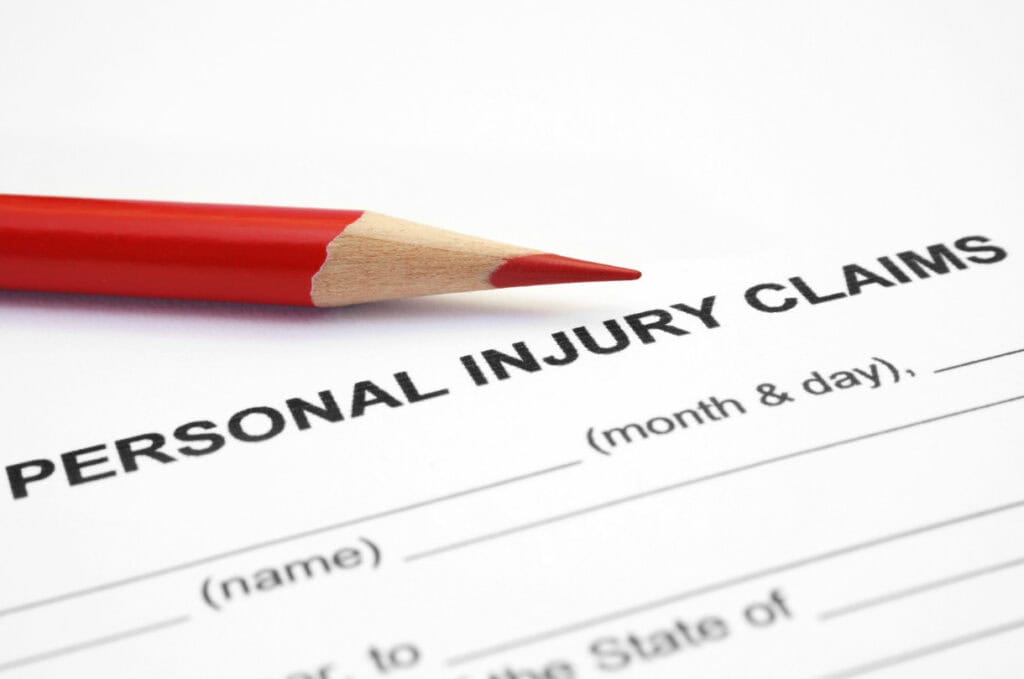An accident can disrupt your life in ways you didn’t imagine. Your health is disrupted and potentially your ability to work. Your finances are often a mess after an accident. Unexpected bills are coming in and each one requires payment.
Table of Contents
If your accident is caused by someone’s negligence, you should be able to file a claim to receive compensation. Sounds pretty simple, you add up the bills and this is the value of your claim. Unfortunately, it’s not that easy.
The value of personal injury claims explained is part of the information we’ll cover, along with how to calculate your damages.

Common Types of Damages in Personal Injury Claims
Before you can file a claim for damages you received in an accident, you need to know what they are. Damages or losses are typically divided into two categories, economic and non-economic.
Economic damages have a dollar value. You can check bills and receipts to come up with an accurate total of these losses.
Non-economic damages are intangible, which means they don’t have a dollar value. You can calculate your non-economic damages but it’s best to work with an experienced attorney. Your attorney can help you assess these damages so you can hopefully maximize your claim’s value.

To help better guide you, here’s a look at a mix of economic and non-economic damages commonly listed on personal injury claims:
- Medical bills
- Loss of income
- Property damage
- Pain and suffering
- Loss of future earnings
- Loss of consortium
- Loss of enjoyment of life
Your claim may include additional damages like pain and anguish caused by permanent disfigurement. Since every claim is different, go over your damages with your attorney to help ensure you’re not leaving anything out.
Calculating The Value of Your Personal Injury Claim
Figuring out the value of your personal injury claim is dependent on the economic damages, and is fairly straightforward. Gather up all of your medical records. If you sustained property damage, you’re going to need these bills and receipts.
Sometimes accident victims are unable to return to work due to severe injuries. You’re going to need your past pay stubs if you’re planning on adding lost income to your claim. Total up all of your receipts and bills—this is the value of your economic damages.
Other times, your injuries require ongoing or long-term care, and if this applies to your claim, these are considered economic damages. To calculate this value, you’re probably going to need medical experts to testify to the average costs.
However, you can go ahead and include the average costs in your claim. During negotiations, your medical expert can provide supporting proof.
Calculating Your Non-Economic Damages
Okay, you’ve made it through the easy part. Now, it gets a little more difficult but don’t panic. Your attorney can use one of two methods to calculate the value of your non-economic damages.
Both methods are accepted by insurance companies, but it’s not a bad idea to use both, so this way, if the insurance adjuster declines one value amount, you’re ready with a second one.
Sometimes, one method produces a higher value that may cause the insurance adjuster to automatically toss out a lower number.
The Per Diem Method
The Per Diem method takes into account the number of days your injuries caused you pain and suffering. If your injuries are severe, it can take months for you to recover from the accident, and this method also looks at the total amount of economic damages.
So, if your pain and suffering lasts for 100 days and your economic damages are $100,000, the value of your non-economic damages is $10;000;000. You should get a pretty good idea of why insurance companies may balk at paying out a multi-million dollar accident claim.
However, if your injuries aren’t severe and your pain and suffering only lasts a few days, your claim’s value will be noticeably lower. For example, if your economic damages are $100,000 and your suffering only lasts for three days, your claim’s value is $300,000. This may be a number the insurance company is willing to work with.
The Multiplier Method
The other method used to calculate the value of non-economic damages assigns a number to your pain and suffering. You pick a number, usually ranging from 1.5 to 5. A higher number denotes more pain and suffering. You’re also going to need the value of your economic damages.
So, if your pain is assigned a 2 and your economic damage totals $100,000, the value of your non-economic losses is $200,000.
How Comparative Negligence Can Affect The Value of Your Personal Injury Claim
Some states like Texas follow comparative negligence rules, which recognizes more than one individual can be responsible for an accident.
As long as you’re not over 50% responsible for the vehicle collision, you should be able to file a compensation claim. Some states allow parties with up to 99% of the blame to still file a claim, so it’s best to check with your local laws.
So, assign blame for an accident, which can be anyone from the authorities to the insurance adjuster. If you disagree with your assigned percentage of the blame, you can file an appeal in civil court. Now, a judge or jury will review your case and assign blame to the responsible parties.
How can comparative negligence impact the value of your claim? The value of your personal injury claim is reduced by your percentage of the blame.
So, if you’re assigned 25% of the blame and your claim is settled for $100,000, you receive $75,000 in compensation, and this applies regardless of which method you use to calculate your damages.

Making Sure That Your Claim Isn’t Devalued
If your accident claim only includes economic losses, calculating its value is relatively straightforward. You may not even need to go through negotiations. However, you’re also probably missing out on potential compensation.
Your non-economic losses can be confusing, but they’re also an important part of most personal injury claims. To help ensure your claim is devalued, it’s a good idea to work with an experienced personal injury attorney.
Along with determining the value of your claim, your attorney can also help ensure you’re not stuck with a low offer from the insurance company.



